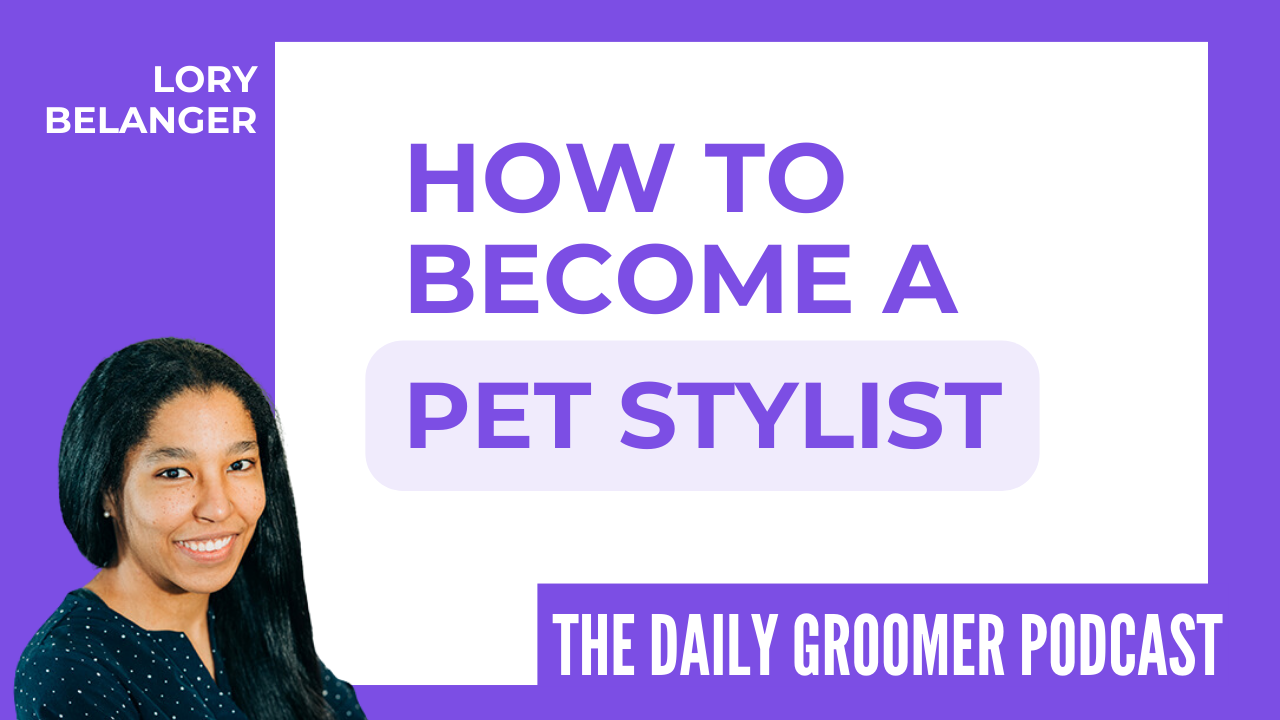Fur's the Charm: Understanding Dog Coat Types and Their Grooming Needs
Explore the fascinating world of dog grooming


Is there anything more variable than the coats of our canine companions? From the silken tresses of an Afghan Hound to the wire-like bristles of a Terrier, the world of dog grooming is both wondrously diverse and intricate. As professional groomers, it's our mission to not only beautify our furry patrons but to ensure their coats are maintained for health and comfort. So, let’s unfurl the mysteries of dog coats and tailor our grooming techniques to each type!
Embarking on the Coat Continuum
Understanding the different types of dog fur is essential for any groomer wanting to deliver excellence with every snip and comb. Dog coats can be broadly categorized into five types: smooth, double, wiry, long, and curly. Each type comes with its unique set of characteristics and needs. Let’s explore these fur families in depth.
The Slick Appeal of Smooth Coats
Smooth coats are your sleek, easy-care fur-coverings found on breeds like the Boxer and the Dachshund. They have short, fine hair that sticks close to the body. Don't be deceived by their low-maintenance look; these coats still require regular brushing to remove dirt and loose hair. A rubber grooming mitt or hound glove works wonders for stimulating the skin and keeping the coat glossy.
Double the Coat, Double the Duty
Double coats, as seen on the Siberian Husky and the Golden Retriever, feature a softer undercoat beneath a layer of longer guard hairs. This combination provides insulation and requires seasonal attention during shedding periods. Weekly brushing with an undercoat rake and a slicker brush aids in removing undercoat tangles and reducing shedding, ensuring a constant routine for optimal coat health.
Wiry Coats: The Rugged Individualists
Wiry-coated breeds like the Scotch Terrier or Wirehaired Pointing Griffon boast rough, coarse hair that needs professional know-how to stay in prime shape. Stripping or plucking the coat is the best way to maintain the rough texture and vibrant color, as opposed to clipping which can soften the coat’s hardy feel. Regularly scheduled hand-stripping sessions are pivotal for their grooming maintenance.
Flowing Locks: High-maintenance, High Reward
Whether it’s a Shih Tzu or a Yorkshire Terrier, long-haired breeds epitomize the glamour dogs of the grooming world. These coats, if not properly tended to, can become a matting nightmare. Daily brushing with a pin brush or a stainless steel comb is essential. Long-haired dogs also benefit from professional conditioning treatments to keep the fur silky and manageable during grooming.
Curly Coats: Navigating the Curls
Poodles and Bichon Frises sport the often-envied curly coats which are both a blessing and a challenge for groomers. These curls can trap debris and mat easily, so consistent brushing with a curved slicker brush is key. Clipping every four to six weeks will keep these curls tidy and the skin breathable, but it also requires precision and artistic grooming skills to achieve the desired sculpted look.
Shedding Light on Seasonal Changes
As seasons change, so do the grooming needs of dogs with double and thick coats. Increased shedding in spring and fall is a signal for a ramped-up grooming schedule. Employing deshedding tools and techniques during these times can greatly reduce the hair buildup in your salon and at your client’s home. It’s a win-win for everyone involved.
Keeping Cool: Summer Grooming Tips
When the heat rolls in, it's crucial to help double-coated dogs stay cool. Remember, never shave down to the skin; this could lead to sunburns and adversely affect the natural growth cycle of the fur. Opt instead for a thinning of the undercoat to promote airflow and cooling.
Winter Calls for Coats
The chillier months might mean more frequent drying and fluffing for certain breeds. Always ensure that dogs leave your salon dry and warm. Short-haired breeds might benefit from a light coat or sweater to protect them from the cold post-grooming.
Nutrition and Skin Care: Underlying Pillars of Coat Health
The sheen of a dog's coat isn’t just about what happens on the outside; it's also a reflection of their internal health. As a grooming pro, you can guide pet owners on the importance of a balanced diet rich in omega-3 and omega-6 fatty acids to support skin health and coat vitality. Moreover, using high-quality hypoallergenic shampoos and moisturizing conditioners can prevent dry, itchy skin that often plagues dogs.
Grooming Tools: An Extension of Your Expertise
Selecting the right grooming tools is akin to an artist choosing their palette and brushes. Each coat type demands specific tools for best results. Pin brushes, slicker brushes, bristle brushes, de-matting combs, and high-velocity dryers are some of the staples for a groomer’s toolkit. Remember to keep them clean and in good repair, as they are the bedrock of every successful grooming session.
Final Thoughts: More Than Just a Pretty Coat
At the end of the day, grooming is about more than aesthetics; it's a vital element in a dog's overall well-being. You, as a professional groomer, play a pivotal role in maintaining the health, happiness, and hygiene of pets. Embrace the various textures, lengths, and challenges presented by different dog coat types. Each groom brings about a transformation that enhances a dog’s quality of life.
Stay updated on grooming techniques, nurture your skills, and let your love for those furry clients shine through your work. Happy grooming!


























.png)



